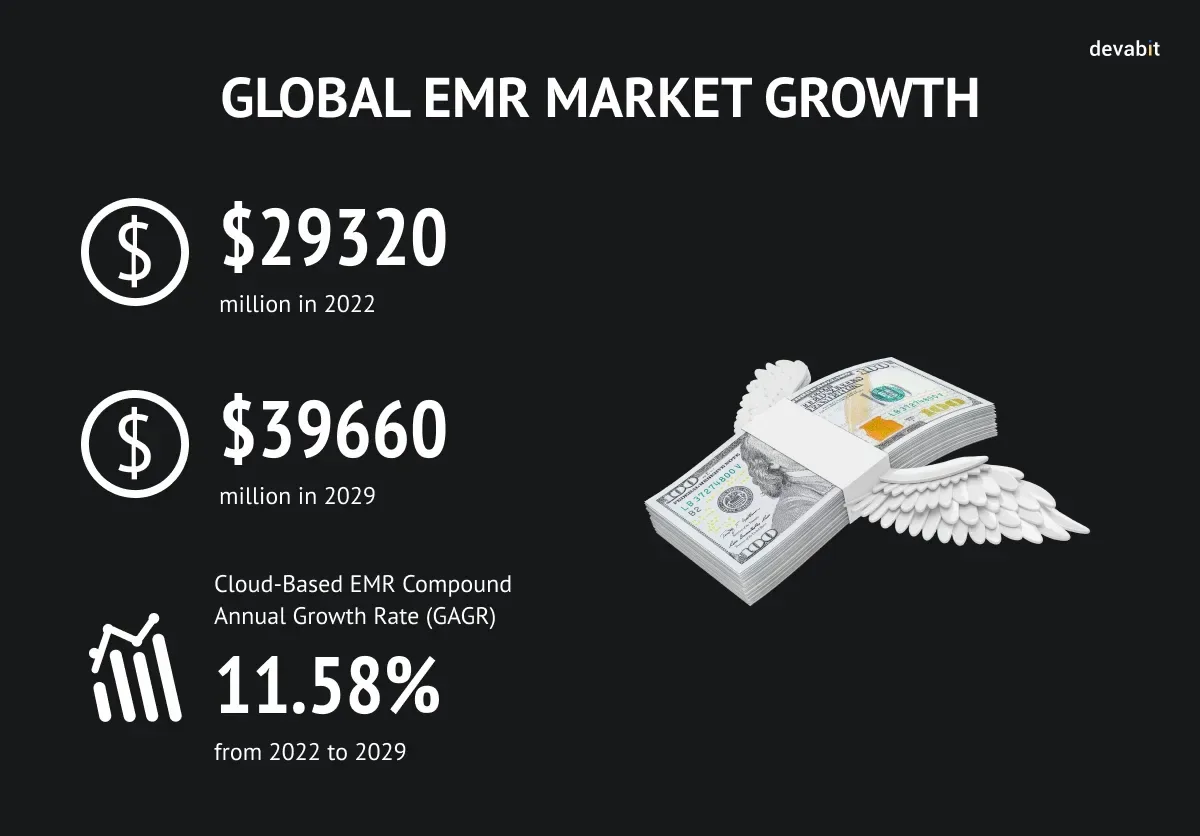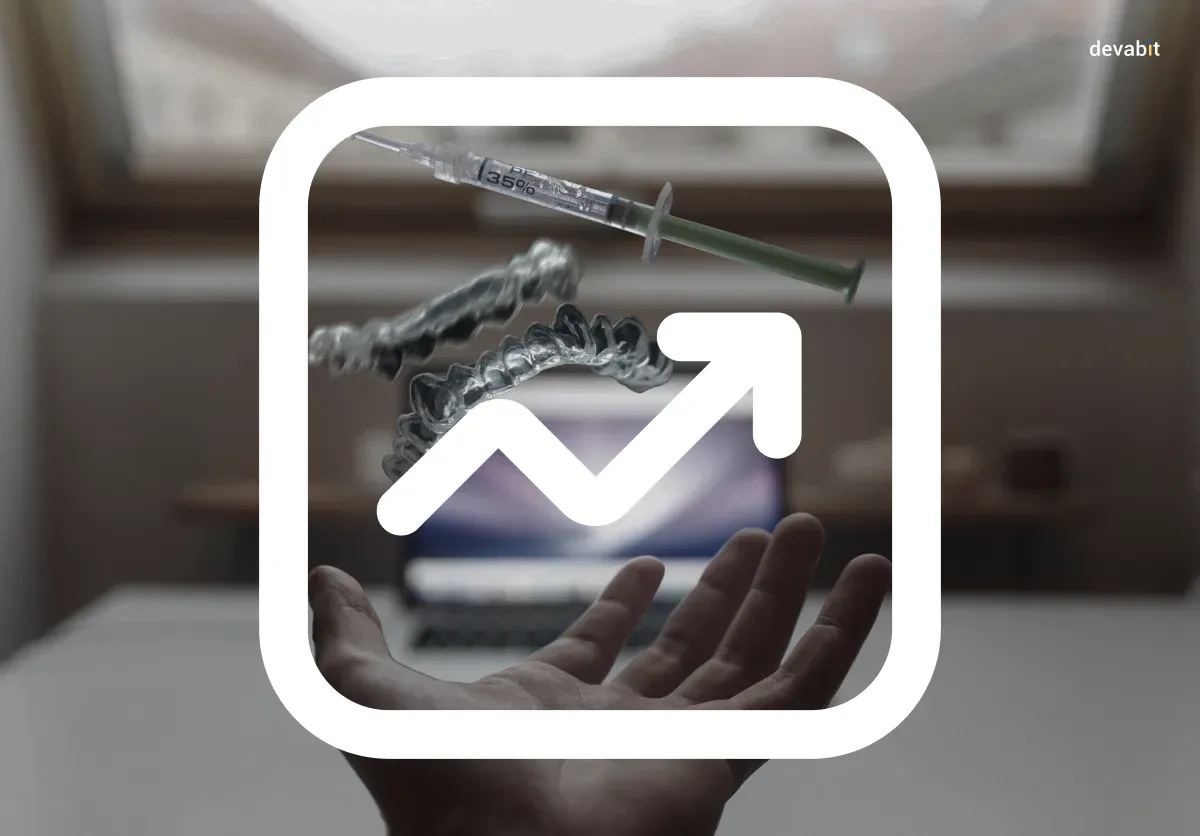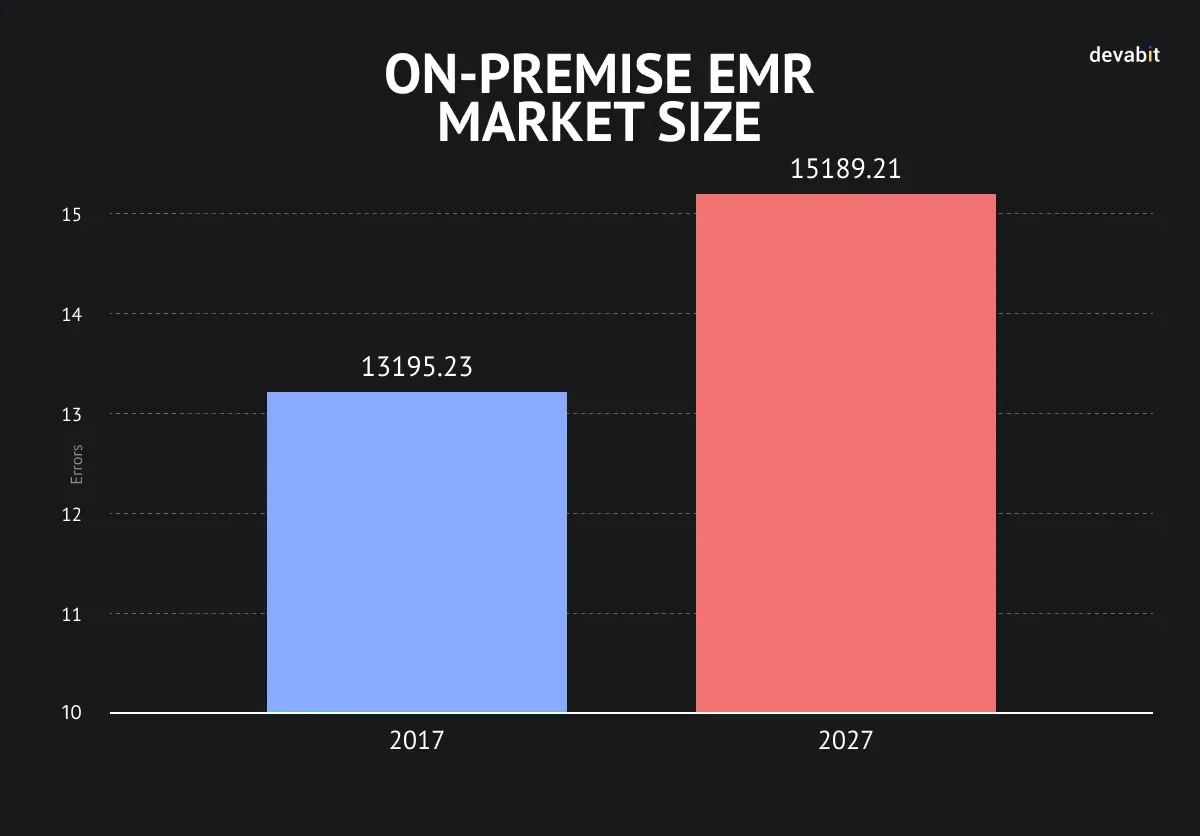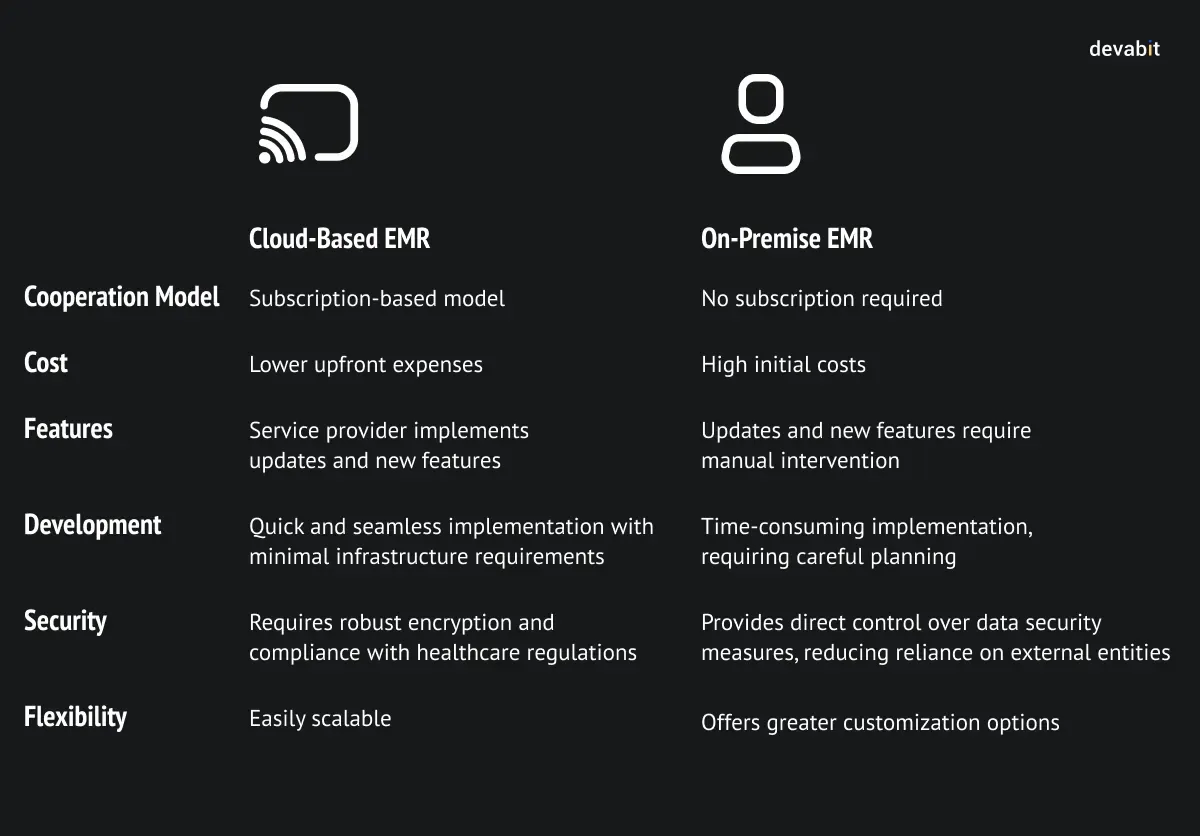Comparing Healthcare Accessibility: Cloud-Based EMR vs. On-Premise EMR Solutions
Cloud-based EMR vs. on-premise EMR solutions? Stay with us to resolve this eternal controversy. From the global pandemic and 5G network to machine learning (ML) and artificial intelligence, the number of transformations that shape our reality is truly mind-blowing. Still, one verity remains unchanged: these transformations have contributed to the inevitable digital revolution, also known as digitalization. In the light of this ever-evolving tendency, many industries, including the healthcare realm, were significantly upgraded with a strong emphasis on digital innovation. Think of electronic medical records (EMR), at least. In addition to digitalized patient data storage, this outstanding solution can function on different bases, such as on-premise or cloud-based EMR foundations. Bearing these two primary deployment models in mind, we delve into the intricacies of both, providing unique insights into their functionalities, advantages, disadvantages, implementation processes, and a comparative analysis of critical factors. If you are keen on the evolution of digital healthcare or want to discover what cloud EMR solutions can bring to the table in the coming days, read on and explore the role of healthcare software solutions in 2026 and beyond.
In short, today we will talk about:
- EMR is a digital documentation system that stores valuable patient information.
- EMRs are used internally. EHRs, in turn, can be transferred to other healthcare organizations.
- Cloud-based EMR is a software system that helps to store and manage patient information on a remote server accessible through the web.
- The key advantages of cloud-based EMR include cost-effectiveness, scalability, and automatic updates, to name a few.
- Speaking of the disadvantages of cloud-based EMR, it is worth mentioning dependence on Internet connectivity and security concerns.
- On-premise EMR solutions host the system on servers physically located within your healthcare organization.
- Among the fundamental benefits of on-premise EMR, there are complete control, no Internet dependence, and tailor-made solutions.
- The disadvantages of on-premise EMR include high costs, access barriers, and maintenance burden.
- Cloud-based EMR vs. on-premise EMR solutions? The choice depends only on your unique needs and preferences, so read on to find out more details.

Back to the Basics or a Few Words Before We Start
Instead of jumping right to the comparison of cloud-based EMR and on-premise EMR solutions, let us take a moment to recall the original meaning and definition of EMR.
What is EMR?
EMR, which stands for electronic medical records, is a digital version of documentation containing valuable patient info in the clinician's office. Typically, it gathers everything, from lab test results to general patient info like demographics, diagnoses, or age, into a digital chart that can be easily stored, accessed, modified, and shared between healthcare practitioners in terms of one healthcare organization.
Speaking of its functions, EMR not only serves as a data storage tool but also can be efficiently used to track data changes, provide patients with access to their medical profiles, and monitor and improve overall patient care quality. Though it was first introduced in 1972, the actual usage of cloud EMR was assured by the HITECH Act only in 2009, initiating the popularity of converting all medical charts to a digital format.

Cloud EMR in Numbers: Key Statistics to Consider
According to Market Reports World, "the global Electronic Medical Record Systems market is projected to grow from USD 29320 million in 2023 to USD 39660 million by 2029 at a Compound Annual Growth Rate (CAGR) of 5.2% during the forecast period." Among the key reasons contributing to such rapid growth of the EMR domain are:
- emerging economies in the Asia Pacific region;
- increasing consumer demand;
- advancements in technology;
- emergence of more efficient and sustainable production methods;
- shifting patient preferences.

Cloud EMR adoption is more than just a healthcare market trend. It reflects a broader transformation in how healthcare organizations manage data, deliver care, and optimize operational efficiency. As providers move away from fragmented, paper-based, or legacy on-premise systems, cloud-based EMR platforms enable greater interoperability, real-time access to patient information, improved clinical workflows, and scalable infrastructure that supports both everyday operations and long-term digital growth.
At the same time, the rapid shift toward cloud technologies opens new opportunities for analytics-driven decision-making, telehealth integration, and patient-centric care. To better understand how these systems are designed, implemented, and optimized in practice, including architecture choices, functionality, compliance considerations, and development costs, explore our ultimate article on Healthcare Web Development in 2026 below:
What is the difference between EMR and EHR?
Although both EMRs and EHRs are utilized to store critical patient data, EMRs are typically used internally, while electronic health records (EHRs) can be easily transferred to other healthcare facilities and organizations. This also means patients are not allowed to share their EMRs with different clinics simultaneously.
Cloud-Based EMR: What, Why, and How?
Let us take a closer look at cloud-based EMR and on-premise EMR separately to gain an in-depth understanding of each concept before the actual comparison.
What Is Cloud-Based EMR?
Cloud-based EMR, or an electronic medical record hosted in the cloud, is a software system aimed at storing and managing patient data on a remote server accessible through the Internet. In simple words, this implies that the system's data is entirely stored in the cloud, so users can easily access it from any location through the Internet. Notably, the system relies on the cloud infrastructure provided by the vendor rather than being based on an on-premise environment. Thanks to the promising potential in terms of streamlining healthcare operations, cloud-based EMR solutions have gained widespread popularity in recent years.
Advantages of Cloud-Based EMR
Saving Your Money
With cloud-based EMR solutions, you do not have to consider upfront investments in hardware and maintenance. Therefore, cloud-based EMR is a cost-effective option for small healthcare organizations.
Scaling Without Doubts
While scalability is of utmost importance when it comes to high-quality patient care services, cloud-based EMR solutions enable healthcare providers to quickly scale resources up or down based on their growing requirements, ensuring optimal performance at all times.
No Limits
Regardless of geographical location, healthcare professionals can easily access patient information via an Internet connection, fostering the next generation of remote patient monitoring and telemedicine services.
Automatic Updates
Since the cloud development provider is responsible for regular updates and maintenance, your cloud-based EMR solution is always equipped with the latest features and security updates.
When it comes to cloud-based healthtech solutions, devabit definitely knows its onions. And particularly talking about bespoke SaaS-based custom solutions that bring real value instead of imaginary outcomes. In our in-depth article on how to make your healthcare SaaS solution thrive, we discovered such topics as:
- What are the examples of Healthcare SaaS platforms?
- What are the must-have features in a profit-making healthcare SaaS solution?
- What are the latest trends in healthcare SaaS development that will put you apart from the competitors?
And even more "what are's" put simply right here:
Disadvantages of Cloud-Based EMR
Dependence on Internet Connectivity
The functionality of a system relies heavily on a stable internet connection. Hence, a high dependence on a stable Internet connection may pose accessibility challenges.
Data Security Concerns
Entrusting patient data to third-party cloud development vendors can be associated with security concerns. Thus, remember to check the vendor's encryption and compliance with healthcare regulations.
Who Can Use Cloud-Based EMR?
Cloud-based EMR can be efficiently utilized by healthcare organizations of any type and size, especially those looking for a flexible and scalable solution without the burden of managing infrastructure.
How to Implement Cloud-Based EMR?
In general, the implementation of a cloud-based EMR solution involves several fundamental steps:
- Choose a reliable cloud development provider.
- Migrate existing patient data to the cloud.
- Configure the system to meet the unique needs of your healthcare organization.
- Train staff on the new system to ensure a smooth transition.
Cloud-Based EMR in Numbers
Growing demand for cloud-based EMR solutions is driven by healthcare digitalization, the incorporation of sophisticated AI/ML algorithms, the adoption of cloud-based healthcare systems, and inefficient facility management. As reported by Mordor Intelligence, the cloud-based EMR market in the US will undergo a remarkable compound annual growth rate (CAGR) of 11.58% from 2022 to 2027.

On-Premise EMR Solutions: What, Why, and How?
Now it is time to dive into the world of on-premise EMR, defining its core meaning, benefits, pitfalls, and promising opportunities. Ready, set... Let us crush it together!
What is On-Premise EMR?
While cloud-based EMR relies on servers located in the cloud, eliminating the meaning of physical location, on-premise EMR solutions are typically associated with hosting the system on servers physically located within your healthcare organization. As a traditional deployment method, on-premise EMR ensures healthcare providers gain complete control over the infrastructure and data, so there is no need to involve third-party vendors. Nowadays, on-premise EMR remains a robust and popular option for healthcare organizations that put an emphasis on internal data control, security, and in-house management.
Advantages of On-Premise EMR
Complete Control
Although some healthcare organizations prefer to get rid of responsibility related to IT infrastructure, others want to have complete control over their data, preventing data breaches or unauthorized access.
Tailor-Made Solutions
When it comes to on-premise EMR solutions, healthcare providers can customize the system to unique needs, seamlessly integrating it with other on-premise systems.
No Internet, No Problem
As the system operates locally, a poor Internet connection does not affect its performance, ensuring uninterrupted access to critical patient records.
Disadvantages of On-Premise EMR
Costly Option
It is not a secret that on-premise software solutions are associated with substantial upfront investments in hardware, software licenses, and maintenance.
Access Barriers
Healthcare practitioners can only access patient data within their organization. Hence, it is impossible to deliver remote patient monitoring and telemedicine services.
Maintenance Burden
As no third-party vendors are involved, the healthcare organization is responsible for system updates, maintenance, and compliance with industry standards.
Who Can Use On-Premise EMR?
Healthcare organizations with experienced IT staff may find that an on-premise EMR solution is the best option. Over and above that, it is a perfect choice for large healthcare organizations with substantial financial resources that seek complete control over their data and infrastructure.
How to Implement On-Premise EMR?
In general, the implementation of an on-premise EMR solution involves several fundamental steps:
- Prepare the necessary hardware and software.
- Install and configure the system within the healthcare organization.
- Train staff on how to use and maintain the system.
On-Premise EMR in Numbers
According to recent surveys, on-premise EMR solutions are still on trend, showcasing the ongoing growth and enduring popularity of this traditional deployment model.

Cloud-Based EMR vs. On-Premise EMR
To be or not to be, to choose Cloud-Based EMR or On-Premise EMR, that is the question... Well, we hope you will find the answer in the following paragraphs.
Owing to their next-gen scalability and flexibility, cloud-based EMR solutions have gained momentum in recent years. With remote servers hosted by third-party providers, healthcare organizations can destroy the burden of infrastructure maintenance and reduce upfront capital expenditures, which results in shorter deployment periods. What is more, cloud-based EMR solutions facilitate remote access to patient records, boosting collaboration among healthcare professionals regardless of their physical location. Thanks to such a high level of mobility, cloud-based EMR not only helps to enhance the efficiency of delivering healthcare services but also enables better patient engagement and care coordination.
Meanwhile, on-premise EMR solutions bring complete control and security to the table. Hosting the EMR infrastructure within the organization's premises, this option guarantees a high level of ownership and direct management over the system, which can be extremely important to healthcare institutions with stringent data security and compliance requirements. On-premise solutions also provide customization opportunities, enabling healthcare organizations to adjust the system to their unique workflows and protocols.

Summing up, the choice between cloud-based EMR and on-premise healthcare solutions is not purely binary since hybrid solutions are gaining popularity. This innovative approach combines the advantages of both cloud-based EMR and on-premise models, ensuring a perfect balance between scalability and control. By way of illustration, sensitive patient data can be stored on-site to guarantee increased security, while less critical services can leverage the cloud for enhanced flexibility.
How to Stand Out in EMR Software Development?
No matter which conclusion you have come up with today, cloud-based scalability or on-premise reliability, you will stumble upon a new challenge anyway. And we are talking about the way companies must stand out in order not to be simply lost, forgotten, or left behind the competitors with weaker tech solutions, but with a stronger vision of uniqueness and a clear understanding of patient needs.
And lucky for you, devabit has prepared not one, not two, but three articles that demonstrate how we help our healthcare clients truly thrive among their competitors, while never forgetting about the role of a solid software background. Follow the links and thank us later ;)
Medical devices are no new players in this game. But neglecting the opportunity to integrate them into your EMR system sounds worse than an unexpected insurance payment delay. Find out what Edge AI devices are and how they help health organisations cure the patients 24/7 while caring about their budgets and employees.
If you ever thought that the era of conversational AI had ended with ChatGPT, we are here to prove you wrong. Discover the endless opportunities in Conversational AI in healthcare and see how you can implement it into your existing business or an MVP-stage idea right here:
Electronic Health Records. One more abbreviation that means way more for modern healthcare than you may have thought. Standing to the EMR as close as possible, it is a perfect way to deliver everything in one place. Find out how to make it effortlessly over here:
Cloud-Based EMR vs. On-Premise Software: Key Takeaways
EMR is a digital version of documentation containing valuable patient info in the clinician's office.
Coud-based EMR is a software system aimed at storing and managing patient data on a remote server accessible through the Internet.
On-premise EMR aims at hosting the system on servers physically located within your healthcare organization.
Advantages of cloud-based EMR include cost-efficiency, unlimited access, scalability, and automatic updates.
Disadvantages of cloud-based EMR include data security concerns and dependence on Intenet.
Advantages of on-premise EMR include complete control, customization opportunities, and uninterrupted access.
Disadvantages of on-premise EMR include high cost, maintenance limitations, and access barriers.

Resolving an Eternal Controversy: Cloud-Based EMR vs. On-Premise Solutions
At the end of the day, both cloud-based EMR and on-premise EMR can empower your healthcare organization with outstanding advantages and bring you a significant competitive advantage. Thereupon, the choice between a cloud-based EMR and an on-premise EMR solution depends only on your unique needs and preferences.
Looking for a reliable cloud development partner with hands-on experience in the healthcare domain? Luckily, devabit can help you turn your dream EMR solution into reality. From custom web development services to cutting-edge SaaS solutions, our cloud development company possesses expertise in any specialization you may require. Just drop us a line below to let us discuss the opportunities.
Recent Publications
Don't miss out! Click here to stay in touch.
Discover More

Relevant Articles View all categories
View all categories CONNECT WITH US WE’RE READY
TO TALK OPPORTUNITIES
THANK YOU! WE RECEIVED YOUR MESSAGE.
Sorry
something went wrong



